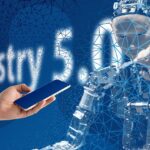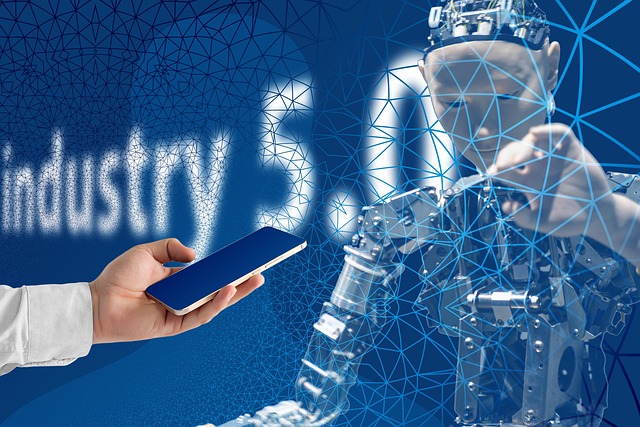# AI and Automation: Exploring the Synergy Between Intelligent Systems and Modern Business Practices
In an era defined by rapid technological advancements, artificial intelligence (AI) and automation have emerged as pivotal forces reshaping the landscape of modern business practices. Companies across various sectors are increasingly leveraging these intelligent systems to enhance efficiency, optimize operations, and drive innovation. This article delves into the synergy between AI and automation, examining their individual contributions and the transformative impact they have on contemporary business environments.
## Understanding AI and Automation
To appreciate the synergy between AI and automation, it is essential to comprehend each component’s unique characteristics and capabilities. AI refers to the simulation of human intelligence processes by machines, particularly computer systems. These processes include learning, reasoning, problem-solving, and understanding natural language. AI encompasses a wide range of technologies, including machine learning, natural language processing, and computer vision, among others.
Conversely, automation is the use of technology to perform tasks with minimal human intervention. This can range from simple mechanical tasks to complex processes involving sophisticated software systems. Automation aims to increase efficiency, reduce human error, and lower operational costs. While both AI and automation can operate independently, their integration offers unprecedented opportunities for businesses to streamline operations and enhance decision-making.
## The Role of AI in Business Automation
Integrating AI into automation processes has revolutionized how businesses operate. By incorporating AI technologies, organizations can significantly enhance the capabilities of traditional automation systems. For instance, AI can analyze vast amounts of data to identify patterns and generate insights that inform strategic decisions. This data-driven approach allows businesses to adapt to market changes swiftly and efficiently.
Moreover, AI-powered automation can improve customer service through intelligent chatbots and virtual assistants. These systems can handle inquiries, provide personalized recommendations, and resolve issues in real-time, thereby enhancing customer satisfaction. By automating routine interactions, businesses can free up human resources to focus on more complex tasks that require emotional intelligence and critical thinking.
Furthermore, predictive analytics, a subset of AI, plays a crucial role in optimizing supply chain management. By forecasting demand and identifying potential disruptions, businesses can make proactive adjustments to their operations, minimizing waste and maximizing efficiency. This proactive approach not only enhances operational resilience but also fosters a culture of continuous improvement within organizations.
## Enhancing Workforce Productivity Through Collaboration
The collaboration between AI and automation does not merely replace human labor; it augments human capabilities, leading to enhanced productivity. By automating repetitive and mundane tasks, employees can focus on higher-value activities that require creativity, strategic thinking, and interpersonal skills. This shift in focus not only boosts employee morale but also drives innovation within teams.
Moreover, AI can serve as a valuable tool for decision-makers by providing real-time insights and recommendations. For instance, AI-driven analytics can help managers identify trends and anomalies, enabling them to make informed decisions quickly. This capability is particularly beneficial in dynamic environments where rapid response times are critical to maintaining a competitive edge.
Additionally, the integration of AI and automation fosters a culture of collaboration among teams. By streamlining workflows and facilitating communication, these technologies create an environment where employees can work more effectively together. Enhanced collaboration leads to improved problem-solving capabilities and the ability to tackle complex challenges more efficiently.
## Challenges and Considerations
Despite the numerous benefits associated with AI and automation, organizations must also navigate several challenges. One significant concern is the potential displacement of jobs due to increased automation. While it is true that certain roles may become obsolete, it is essential to recognize that new job opportunities will also emerge. Reskilling and upskilling the workforce will be critical to ensuring employees can adapt to the evolving landscape.
Another challenge lies in data privacy and security. As businesses increasingly rely on AI to process sensitive information, the risk of data breaches and misuse becomes a pressing concern. Organizations must implement robust cybersecurity measures and adhere to regulatory standards to protect their data and maintain customer trust.
Furthermore, the ethical implications of AI deployment cannot be overlooked. Ensuring that AI systems are designed and implemented in a way that is fair, transparent, and accountable is crucial. Businesses must be proactive in addressing biases in AI algorithms and ensuring that their use aligns with ethical standards and societal values.
## Conclusion
The synergy between AI and automation represents a transformative force in modern business practices. By leveraging these intelligent systems, organizations can enhance efficiency, improve decision-making, and foster innovation. While challenges exist, the potential rewards of embracing AI and automation far outweigh the risks. As businesses navigate this new landscape, a proactive approach to workforce development, data security, and ethical considerations will be essential.
Ultimately, the integration of AI and automation is not merely a trend; it is a fundamental shift in how businesses operate and compete. By embracing this synergy, organizations can position themselves for success in an increasingly complex and dynamic marketplace. As we move forward, the collaboration between intelligent systems and human ingenuity will undoubtedly shape the future of work, driving progress and unlocking new possibilities for businesses worldwide.











